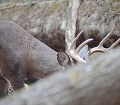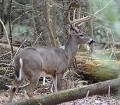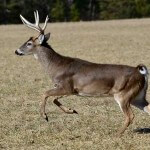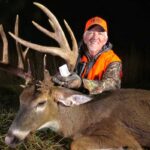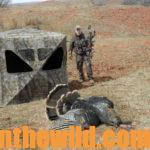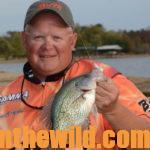John’s Note: Can you spot a turkey’s head as the bird comes through new foliage? Too, can you quickly and easily identify whether or not the bird has a beard? Can you see a deer fast and get off a clear shot before it vanishes in thick brush? While bowhunting with Travis Fryman, well-known professional baseball player and winner of several batting awards in the national leagues, I asked, “How do you see a baseball being thrown toward home plate at 90 mph?” Fryman answered, “I can see the ball and even the stitches on the ball and know which way those stitches are turning.” With that knowledge, in less than a fraction of a second, Fryman could determine when to swing his bat and where to hit the ball. Fryman had sharpened his vision skills through exercises. When a pro quarterback has called a pass play, he must be able to see each of his wide receivers as they run down and across the field and determine which receiver to throw the ball to complete the pass before he’s tackled. Too, the faster you can identify a turkey or a deer as it moves through the woods, the quicker you can mount your rifle or shotgun, aim and shoot accurately. There are ways you can speed up your reaction time by developing your vision skills. No matter how good someone’s basic visual abilities are, they can be enhanced. You can start now to improve your spring turkey season and fall and winter deer season success by developing your visual skills.
 Often hunters overlook the most-critical tool to successfully hunting deer and turkeys – good vision. For many years, I assumed that either you could see well, or you needed glasses. I also thought that if you wore glasses, you could see better than people who didn’t have glasses, but who needed them. I supposed that 20/20 vision and experience in hunting and shooting were enough to make someone an excellent woodsman. I’ve learned, though, that no matter how well you see in the woods, you can be taught to see better and to recognize what you see more quickly and accurately. Just like shooting, this is a learned skill that is necessary for successful hunting.
Often hunters overlook the most-critical tool to successfully hunting deer and turkeys – good vision. For many years, I assumed that either you could see well, or you needed glasses. I also thought that if you wore glasses, you could see better than people who didn’t have glasses, but who needed them. I supposed that 20/20 vision and experience in hunting and shooting were enough to make someone an excellent woodsman. I’ve learned, though, that no matter how well you see in the woods, you can be taught to see better and to recognize what you see more quickly and accurately. Just like shooting, this is a learned skill that is necessary for successful hunting.
 “There is a difference between eyesight and vision,” Dr. F. J. Day, my longtime optometrist from whom I sought advice, told me. “Eyesight is what enables you to recognize a certain size letter at a certain distance on an eye chart. Vision is the ability to use what you see to perform some task. A typical example of the difference between eyesight and vision is what a man does when he sees a truck coming. With his eyesight, he observes a truck coming his way. By using his vision, he knows what he must do and how quickly he must react to keep from getting run over.”
“There is a difference between eyesight and vision,” Dr. F. J. Day, my longtime optometrist from whom I sought advice, told me. “Eyesight is what enables you to recognize a certain size letter at a certain distance on an eye chart. Vision is the ability to use what you see to perform some task. A typical example of the difference between eyesight and vision is what a man does when he sees a truck coming. With his eyesight, he observes a truck coming his way. By using his vision, he knows what he must do and how quickly he must react to keep from getting run over.”
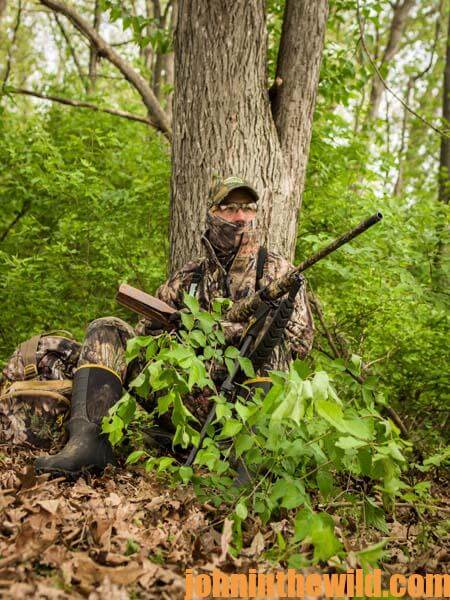 When I was stalking that deer (see Day 1), I guessed that what I was looking at was a deer. But I was unable to distinguish the animal from its background and to determine whether it was a buck or a doe. With training, however, you can learn to make those visual distinctions rapidly. A friend of our son’s wanted to fly and hoped for an appointment to the U.S. Air Force Academy. But although he had 20/20 eyesight, his vision skills were poor. In high school, he spent about 6 months with a developmental optometrist in his office and also working at home to develop his visual skills, got his appointment and served as an Air Force pilot for 20 years.
When I was stalking that deer (see Day 1), I guessed that what I was looking at was a deer. But I was unable to distinguish the animal from its background and to determine whether it was a buck or a doe. With training, however, you can learn to make those visual distinctions rapidly. A friend of our son’s wanted to fly and hoped for an appointment to the U.S. Air Force Academy. But although he had 20/20 eyesight, his vision skills were poor. In high school, he spent about 6 months with a developmental optometrist in his office and also working at home to develop his visual skills, got his appointment and served as an Air Force pilot for 20 years.
To get John’s book, “The Turkey Gobbler Getter Manual,” for free, go to www.johninthewild.com/free-books to download.
To learn more about John E. Phillips’ eBooks and print books on hunting turkeys and deer, click here.

